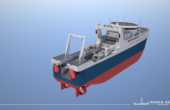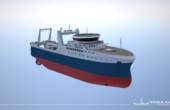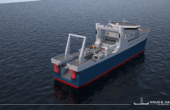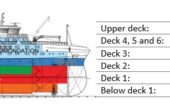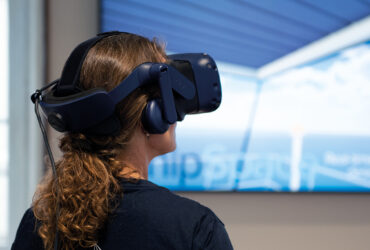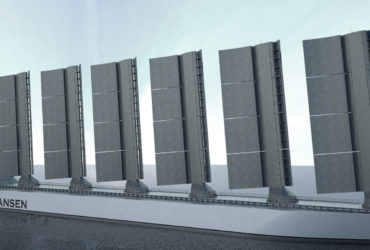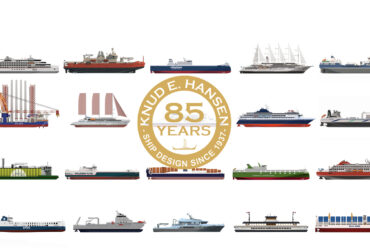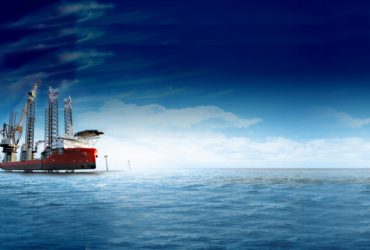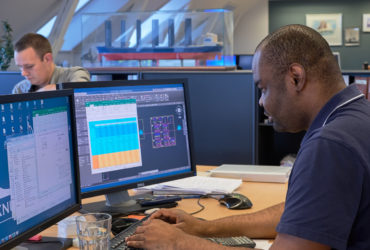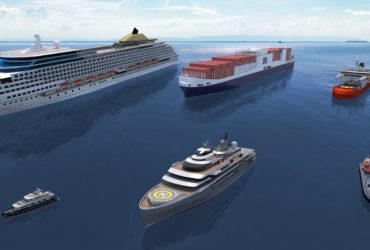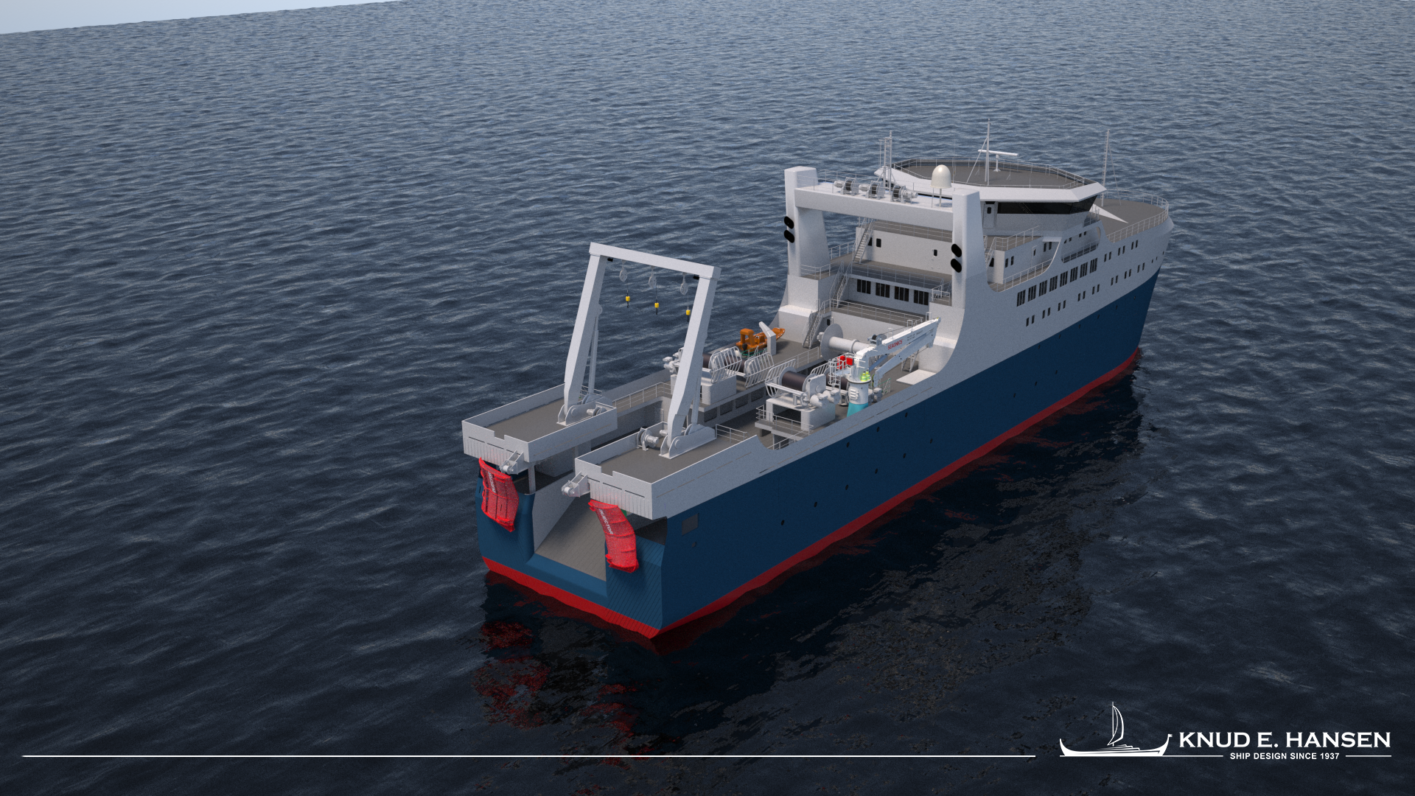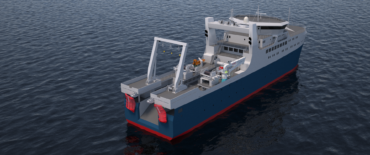26 September 2018
Article from THE MARINE PROFESSIONAL, October 2018
An entirely new design for the ocean factory trawler sector has been released by a Faroe Islands team – updating a classic layout that has remained unchanged for decades.
Ocean factory trawlers have grown larger in size and capacity over the years. However, there has been little innovation in recent designs and constructions. The classic stern trawler layout – commonly known as the Norwegian design – originates to a great extent from the Faroese stern trawlers built in Norway. “If you have sailed one, you have sailed them all,” explains Marni Olsen, who with Thormund Johannesen, a fellow master mariner and senior naval architect at the Faroe Islands consultancy Knud E. Hansen, has now come up with a fresh approach to the layout of the ocean factory trawler. “Our evaluation of the original design, construction and technology led us to conclude that improvements could be made – and were needed.”
Propulsion performance
Trawlers need large towing power and therefore the engines and propellers have been getting bigger to improve efficiency. As the trawler draught sets a limit for the size of the propeller, trawlers are often designed with a stern trim. This can have an adverse effect on propulsion and create slamming.
“What we have seen over recent years – and what our clients operating in the North Atlantic have noted – is the fact that there have been very few changes or improvements in the design of ocean factory trawlers for decades,”says Olsen. “We therefore set ourselves a course to rethink and improve many aspects of the ocean trawler. “The aim of this new design, therefore, is to set new standardsfor the next generation of ocean factory trawlers and encourage the seeking out of innovation in all solutions and adaptations of newtechnologies to the long-provenconcept of stern trawlers.”
Propulsion performance
The new design from the team at Knud E. Hansen has created a complete rethink of all the main features, construction and components of the ocean trawler.
“Having the cargo hold and engine room kept separated on the lower decks in the full length of the vessel generates changes of the entire layout, explains Olsen. “Having a linear arrangement on these decks opens up new options for the functionality, workflow and use of space throughout the entire vessel.
“The design doesn’t have traditional seawater ballast tanks. “Instead, it features a ballast keel that – apart from the solid weight – can also hold 150 tonnes of flow-through seawater ballast. “The twin slow-rotating electrically driven propellers double the propeller disc area compared to a single propeller design, which generates high torque and greater efficiency.
“Having the engine room laid out on one deck in full length of the ship significantly improves the practical working conditions for the ocean factory trawler engineer. “The extension of the engine room to the full length of the ship allows us to move the casings for exhaust and ventilation forward, resulting in a better working area on the trawl-deck aft.”
Increased deck area
The deck area in the cargo hold is twice the size of the deck area in a traditional trawler layout. “This helps to give a practical working height comparable to the height inside a refrigerated container – improving practical working conditions and safety during fishery and when unloading,” says Olsen.
“The increased working areas aft on the trawl-deck allowed us to improve the design of the equipment and the handling of fishing gear. The traditional gallows and outhauls are replaced with a single hydraulic A-frame on top of the lifted deck.
“From this position it can, due to the opening in the upper deck over the trawl slip, cover the area from behind the stern to the aft end of the trawl lanes. “Accommodation quarters are all placed forward on Decks 4, 5 and 6. On Deck 4 there are twenty cabins, and on Deck 5 and 6 there are six cabins on each deck.
“The crew live in single berth 15m2 cabins, which include a toilet, with the officer’s cabins being somewhat bigger. “The accommodation quarters, cabins, corridors and stairwells are all arranged so that the starboard crew on watch never needs to disturb port crew off duty – and vice versa.”
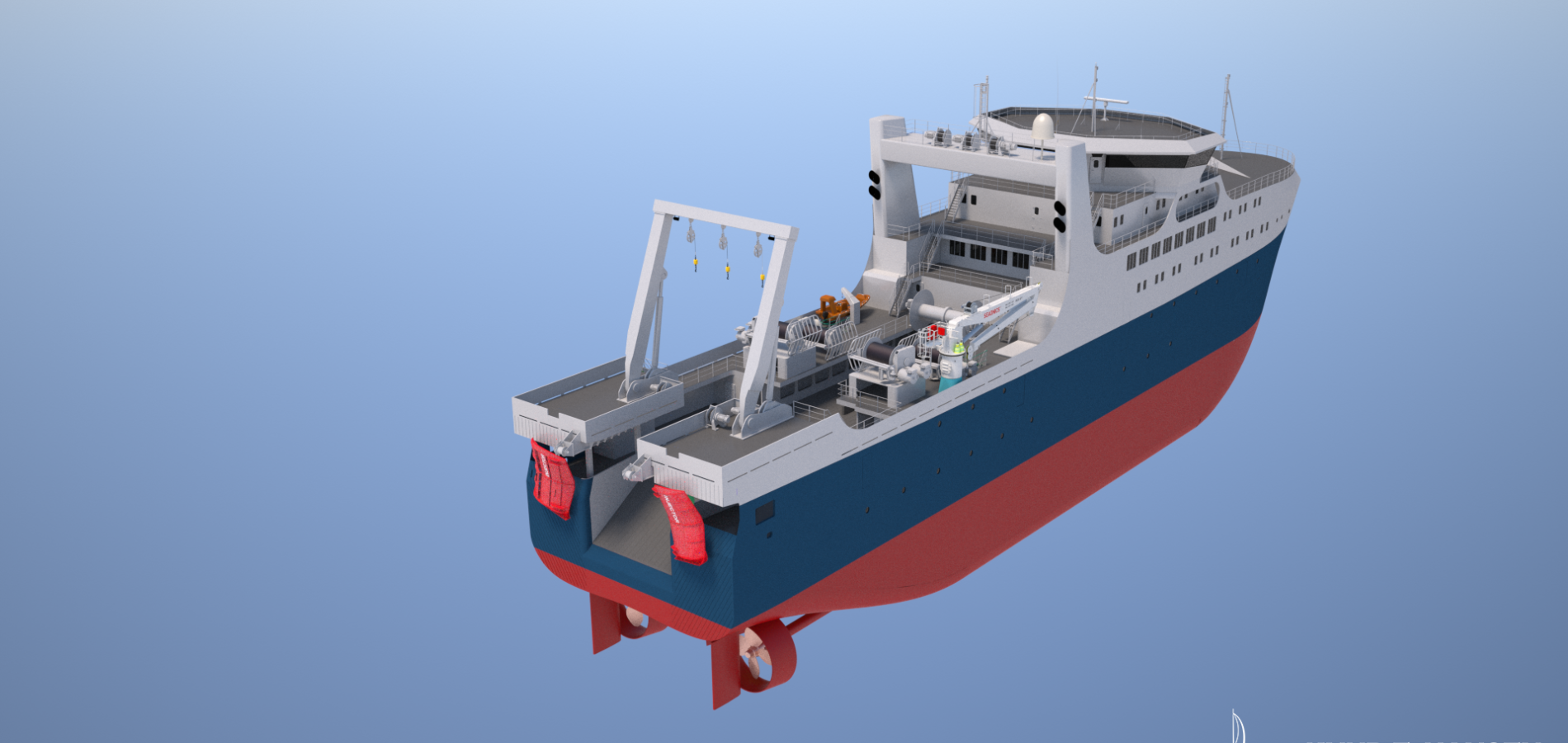
Ocean factory trawler designed by KNUD E. HANSEN
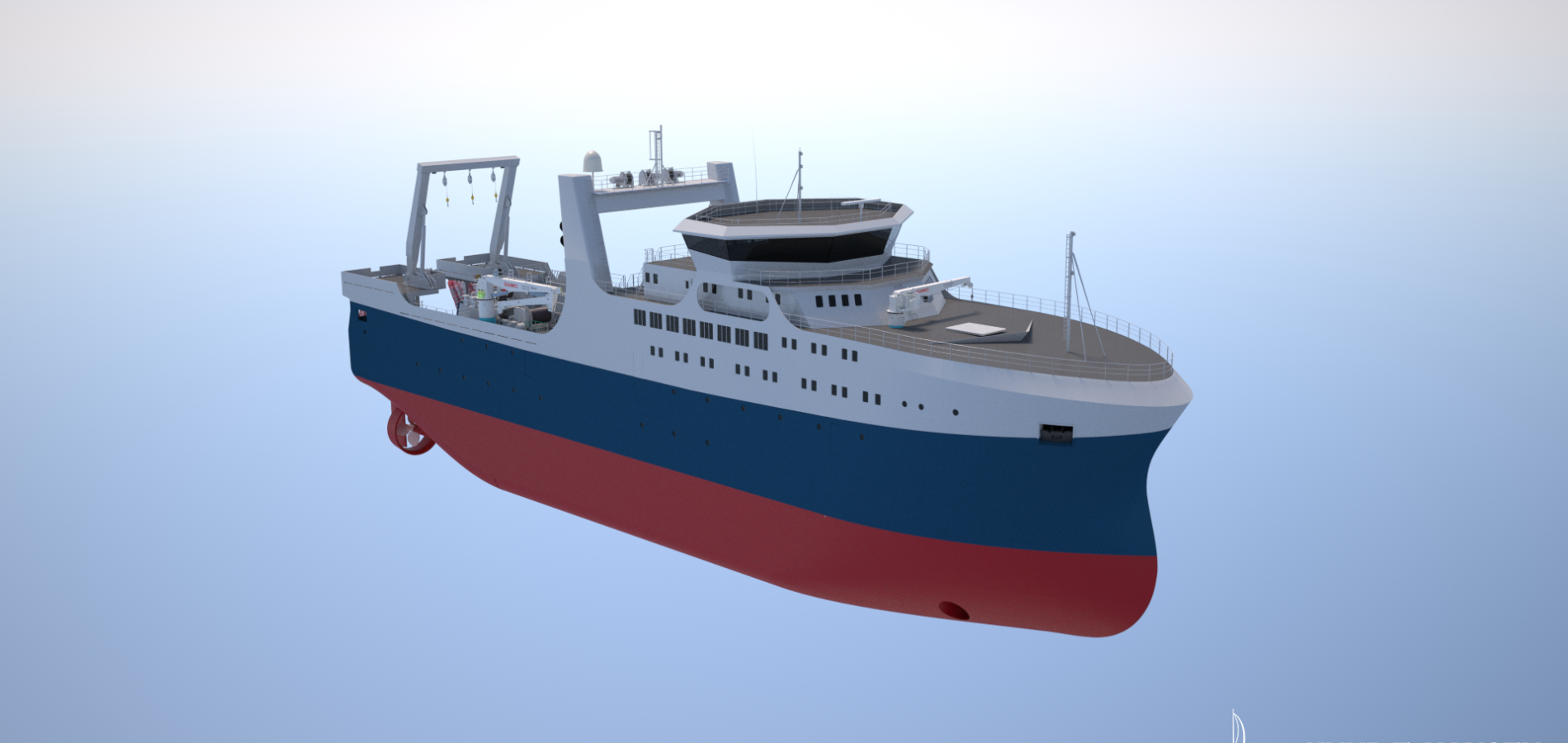
Entirely new design for the ocean factory trawler
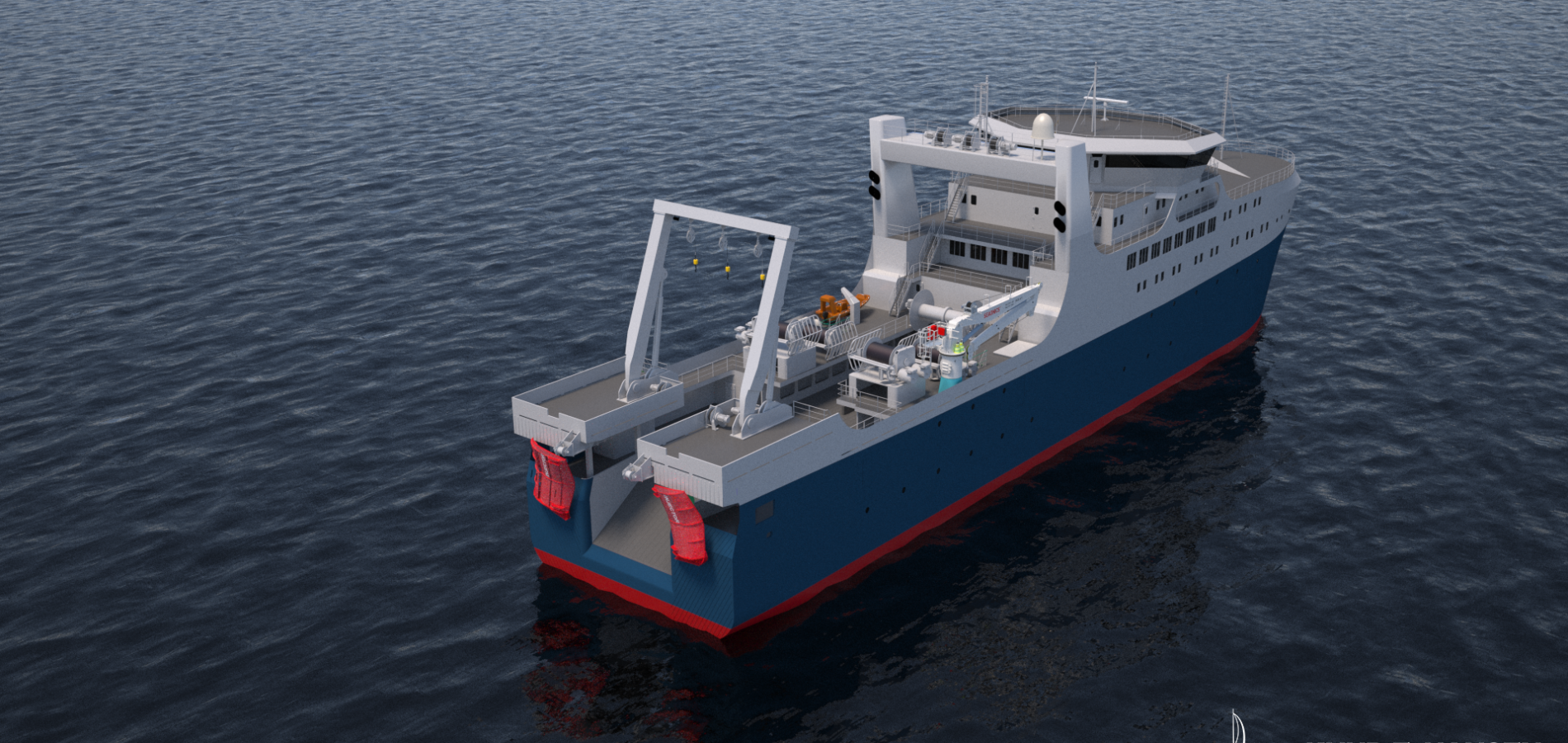
Increased deck area on factory trawler

Deck plan for Ocean Factory Trawler
